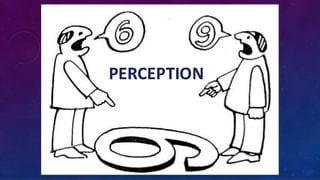Hi, I'm Emma Herms
a Ph.D. candidate in Clinical and Cognitive Science at Indiana University. My work uses computational and neuroimaging methods to study interoception (i.e., the physiological state of the body) and affective processes (e.g., emotion regulation, interpersonal relationships, decision-making) in both community and clinical populations.
Publications
Marks, N., Herms, E.*, & Wisner, K. (2025) A Longitudinal Study on the Relationship between Delusional Ideation and Social Network. Under Review - Available at SSRN 5175508. * Co-Senior Author
Herms, E., Brown, J., Wisner, K., Hetrick, W., Zald, D., & Purcell, J. (2024) Modeling Decision-Making in Schizophrenia: Associations Between Computationally Derived Risk Propensity and Self-Reported Risk Perception. Schizophrenia Bulletin 51 (1), 133-144.
Bloomer, B., Larson, E., Tullar, R., Herms, E., Bolbecker, A., O’Donnell, B., Hetrick, W., & Wisner, K. (2024). Alterations in self-reported sensory gating and interoception in individuals frequently using cannabis. The American Journal of Drug and Alcohol Abuse 50 (4), 525-535.
Herms, E., Bolbecker, A., & Wisner, K. (2024). Impaired Sleep Mediates the Relationship Between Interpersonal Trauma and Subtypes of Delusional Ideation. Schizophrenia Bulletin 50 (3), 642-652.
Herms, E., Bolbecker, A., & Wisner, K. (2022). Emotion Regulation and Delusion-proneness Relate to Empathetic Tendencies in a Transdiagnostic Sample. Frontiers in Psychiatry 13, 992757.
Purcell, J., Herms, E., Morales, J., Hetrick, W., Wisner, K., & Brown, J. (2022). A review of risky decision-making in psychosis-spectrum disorders. Clinical psychology review 91, 102112.
Herms, E., Bishop, J., Okuneye, V., Tamminga, C., Keshavan, M., Pearlson, G., ... & Keedy, S. (2020). No connectivity alterations for striatum, default mode, or salience network in association with self-reported antipsychotic medication dose in a large chronic patient group. Schizophrenia research 223, 359-360.
Ongoing Projects
Interoceptive Models of Mental Health
Supported by a National Research Service Award (NRSA): Internal body states (heartbeats, temperature) shape our experience of self, affect, and the world. For example, a racing heart can influence our judgment of a stranger as hostile. Thus, accurate detection, integration, and interpretation of internal body states - termed interoception - is essential for adaptive functioning. Interoception is hypothesized as disrupted in psychosis. For example, interoceptive accuracy tasks (e.g., heartbeat counting) have revealed poor detection of internal body states in psychosis-spectrum samples. Manipulation of internal body states during predictive coding experiments is a critical next step to move beyond descriptive work, to elucidate subprocesses of disrupted interoception. Toward this goal, we aim to employ a novel Interoceptive Conditioning (IC) task with non-painful heat stimuli - modeled after Powers and colleague’s Conditioned Hallucinations task.
Science Communication
Perception, a constructed reality
Sensory information, via our eyes, ears, and other organs, forms the foundation of our lived experience. Yet we find ourselves perceiving the world differently from our family, friends, and the person sitting next to us at our favorite sports event, who calls the ball out when it clearly hit the line! So how accurate is our perception, really? This isn’t just an intellectual question about the physiological and psychological processes happening throughout our body; it has real world consequences.

Experiencing our body: The role of interoception
Our brain is constantly keeping track of the experience of our body in the environment, enabling us to determine where we are, how we feel, and respond appropriately. How does this work? Let’s find out! Researchers parse the experience of our body into three domains: exteroception, proprioception, and interoception. Are you familiar with these terms? What type of information do each of these domains contribute to the experience of the body in the image to the right?

What are delusions?: A look at social processes behind delusional beliefs
Researchers and mental health professionals use a common definition to describe delusions: a fixed, false belief held despite contradictory evidence. Not only does this definition fail to distinguish delusions from other widespread beliefs, such as religious or ideological beliefs, but it also attempts to simplify delusions to an individual characteristic of irrationality (i.e., the person has failed to distinguish what is true and false. This conceptualization of delusions has been criticized, and new theories have emerged, which focus on the inherently social nature of acquiring beliefs. This framework might better explain why delusions exist in the general population and identify some ways in which false beliefs can form...

Putting it into context: How psychology has shaped our knowledge of universal emotions
What are common emotions experienced in your culture? In the United States, happiness, anger, sadness, and fear are considered common emotions. The traditional theory of emotion assumes emotions are universally recognized by all humans. This theory dominates pop culture, with movies like Pixar’s Inside Out, which features characters personifying five emotions that coordinate our every action, and items like Amazon’s Halo Watch, which claims to detect emotions based on tone of voice. Yet, it is not possible to determine what emotion someone is experiencing based only on their face or tone of voice. Instead, our brain makes a prediction that is influenced by past experience, the current context, and interoceptive signals from our body (e.g., heart and breathing rate, hunger cues) from a culture-specific perspective...
